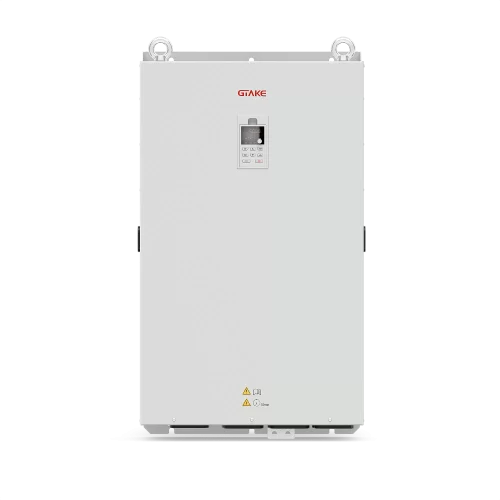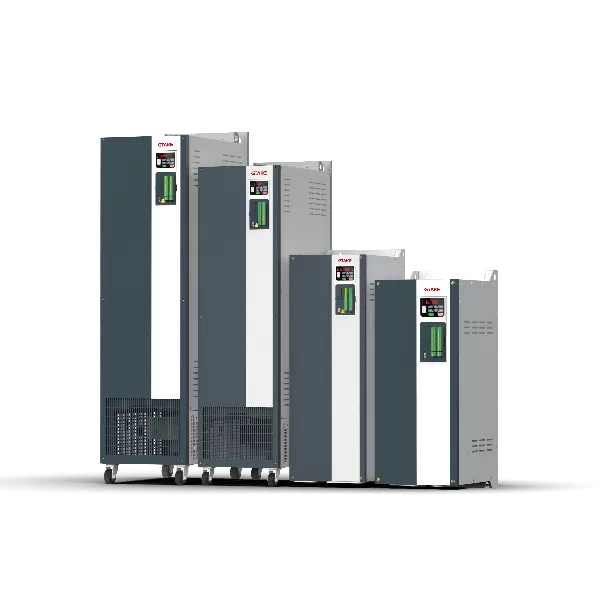In industrial automation, variable frequency drives (VFDs) play a crucial role in controlling motor speed and optimizing energy consumption. To integrate VFDs effectively into a broader control system, reliable communication is essential. RS485, a widely used industrial communication interface, is favored for its long transmission distance, strong noise immunity, and ability to support multiple devices.
This article explores the significance of RS485 in VFD applications, best wiring practices, and considerations when choosing between an integrated RS485 expansion card and an external RS485 module.
Understanding RS485 and Its Importance in VFD Communication
RS485 is a physical layer communication standard designed for serial data transmission in industrial environments. Unlike RS232, which supports only point-to-point connections, RS485 allows multiple devices to communicate on the same bus, making it ideal for distributed control systems. Key advantages of RS485 in frequency inverter drive applications include:
- Long-Distance Communication – Capable of transmitting signals up to 1200 meters without significant loss.
- Multi-Device Support – Supports a multi-drop network, allowing multiple VFDs to be controlled on the same communication line.
- Robust Noise Immunity – Uses differential signal transmission, making it highly resistant to electromagnetic interference (EMI).
- High-Speed Data Transfer – Operates at baud rates up to 115.2 kbps, enabling real-time motor control and system monitoring.
With these features, RS485 is widely adopted in industrial VFD systems, enabling seamless communication between VFDs, PLCs, and other automation devices.

Best Wiring Practices for RS485 in VFD Systems
Ensuring a stable RS485 communication network requires proper wiring techniques to minimize interference and signal loss.
1. Recommended Cable Selection
For optimal performance, use:
- Shielded twisted-pair cables with an impedance of 120Ω, such as RVSP2*0.5.
- Proper grounding of the cable shielding to reduce EMI and improve signal integrity.
2. Correct RS485 Wiring Method: Daisy-Chain (Bus) Topology
The most effective way to connect multiple VFDs on an RS485 network is daisy-chain topology (bus topology), where devices are linked in series. This method ensures stable signal transmission and reduces signal reflection.
Proper connection example:
Master → VFD1 → VFD2 → VFD3 → VFD4
Improper connection (star topology), which should be avoided:
→ VFD1
Master → VFD2
→ VFD3
Star topology can lead to communication errors due to signal reflections and improper impedance matching.
3. Termination Resistors for Long-Distance Communication
When the RS485 network exceeds 100 meters, 120Ω termination resistors should be placed at both ends of the communication bus to reduce signal reflections and ensure data integrity.
4. Maximum Number of Devices on an RS485 Bus
The number of devices that can be connected depends on the RS485 transceiver capability:
- Standard RS485 transceivers support up to 32 devices.
- Enhanced transceivers can support 128 or even 256 devices.
- If more devices are required, RS485 repeaters should be used to extend the network.
5. Transmission Distance and Baud Rate Considerations
The theoretical maximum transmission distance for RS485 is 1200 meters, but real-world conditions can reduce this distance.
- At baud rates above 9600 bps, transmission distances decrease due to signal degradation.
- Beyond 1000 meters, repeaters or signal boosters may be needed for reliable communication.

RS485 and Modbus RTU: Understanding Their Relationship
RS485 is often associated with Modbus RTU, a widely used communication protocol in industrial automation. However, it is important to distinguish between the two:
- RS485 is a physical layer standard that defines how electrical signals are transmitted.
- Modbus RTU is a protocol that defines how data is structured, addressed, and exchanged between devices.
While Modbus RTU is commonly implemented over RS485, other protocols, such as Profibus and BACnet MS/TP, can also operate on RS485 networks.
For multi-device communication, both the physical layer (RS485) and the protocol (Modbus RTU or another) must support addressing. Without proper addressing at the protocol level, multiple devices cannot be effectively managed on the same RS485 network.
Conclusion: Reliable RS485 Communication for Optimized VFD Performance
Implementing RS485 communication correctly in a VFD system is crucial for achieving stable motor control, efficient data exchange, and seamless integration with industrial automation networks.
By following best wiring practices, selecting the right communication topology, and using termination resistors for long-distance setups, users can maximize the reliability of RS485-based VFD communication.
GTAKE provides high-performance VFD solutions with built-in RS485 support, ensuring robust and reliable communication for a wide range of industrial applications.
For expert guidance on RS485 communication in VFD systems, contact GTAKE today and discover how our advanced frequency inverter technology can enhance your industrial automation setup.
